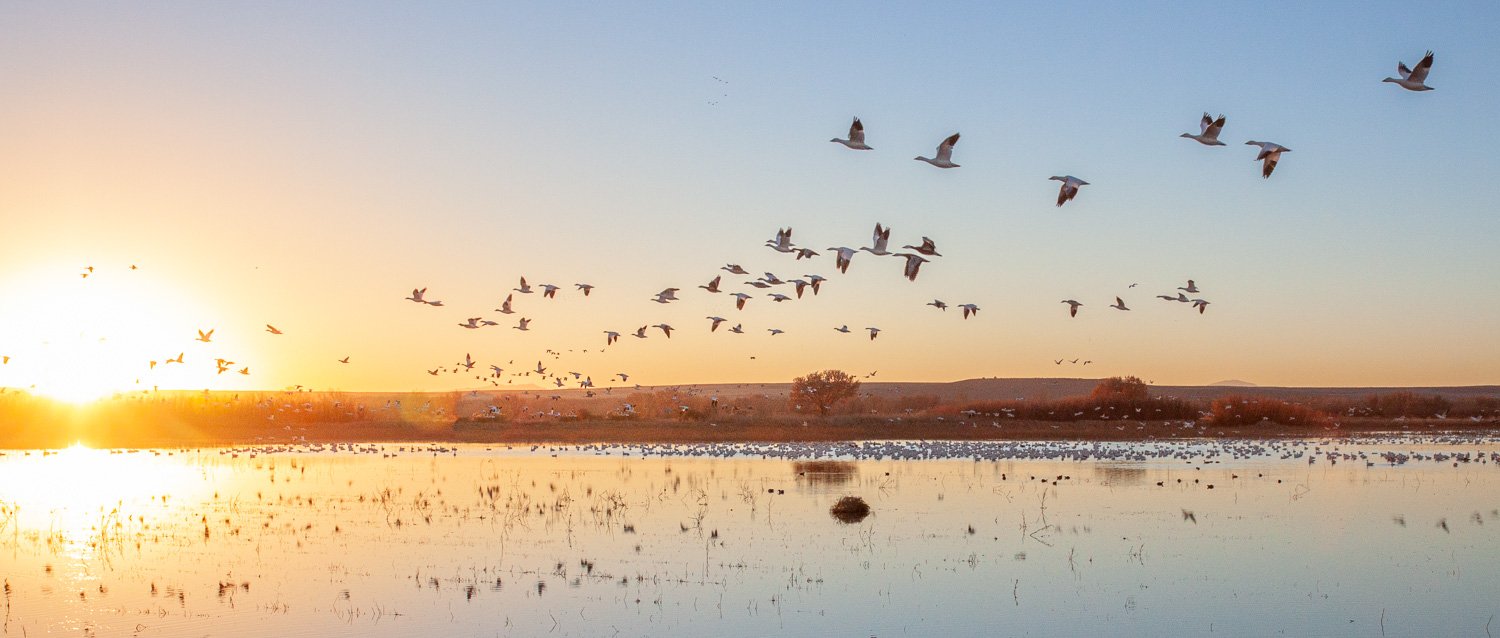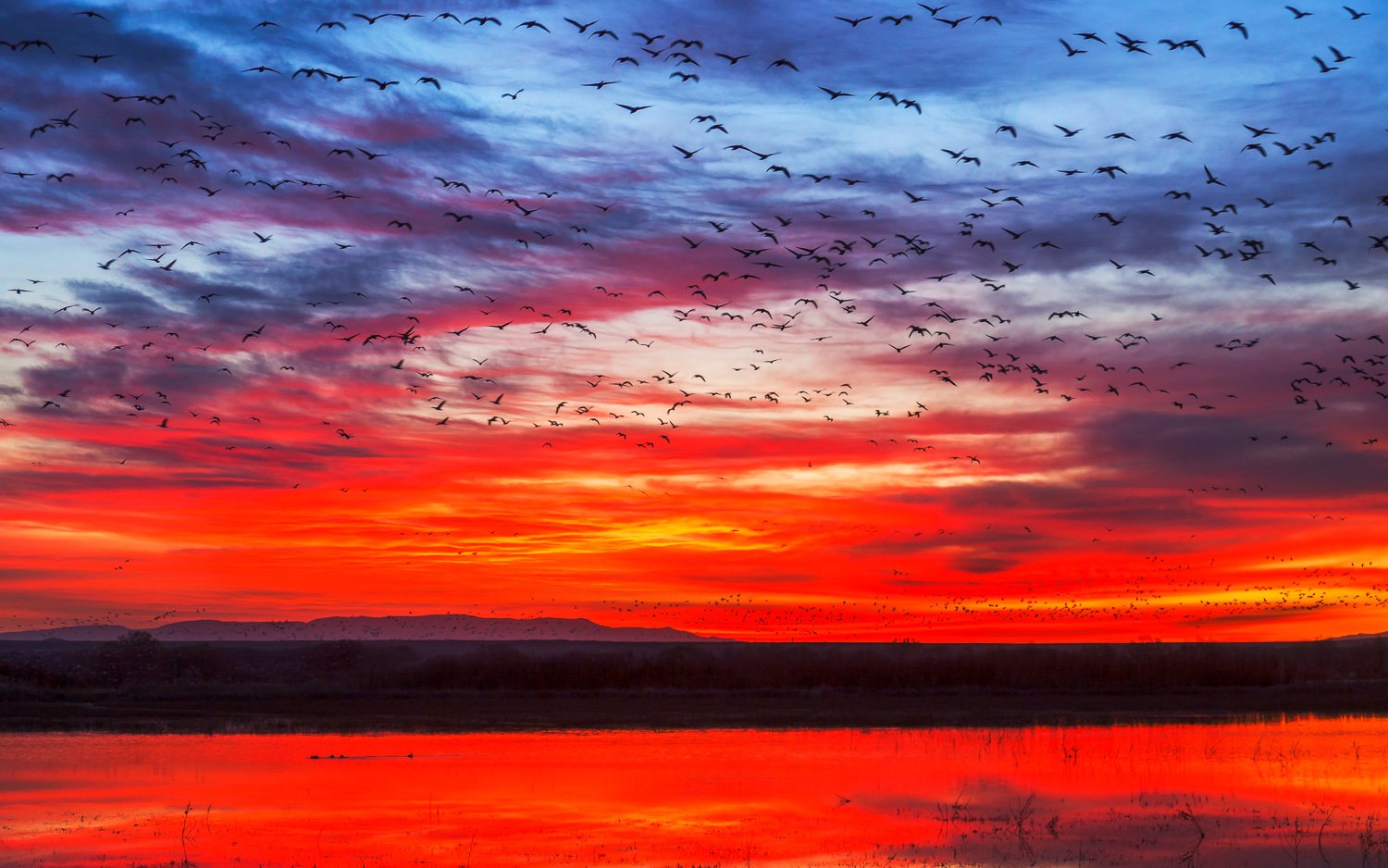I wasn’t sure what to post today. Then Margaret Renkl’s column in this morning’s paper took me back to many events, and I wanted to share those with you.
Snow Geese, Bosque del Apache National Wildlife Refuge, New Mexico
Renkl is an author and regular columnist at the New York Times writing about experiences in the natural world. Today’s piece was inspired by her visit to Wheeler National Wildlife Refuge in Alabama to visit Sandhill Cranes that winter there. I’ve now got another place on my list to visit! I have however been to a winter gathering spot for the Sandhills in New Mexico. Closer to home, the cranes rest at Jasper-Pulaski National Wildlife Refuge in Indiana while on migration.
Sandhill Cranes, Jasper-Pulaski National Wildlife Refuge, Indiana
Renkle writes: “Cranes look like prehistoric creatures, and indeed, the majestic sandhills—standing nearly four feet tall and mostly gray, with a startling crimson crown—are among earth’s oldest bird species.”
Sandhills, Jasper-Pulaski NWR
Renkle: “My husband kept laughing at their ungainly landings, but all I could see was the magnificent way they moved in concert— . . . rising and banking, their elegant necks outstretched, their wide wings turned at exactly the same angle, glinting in the sun.”
Some Sandhills winter in Florida and a subspecies stays all year. Some of these are very tame, and I’ve got some close-up images with wide angle lens there many times. A small group was grub hunting in my mother’s lawn many years ago, and I set out a chair to watch them. One wanted to check out my shoes.
Renkl wrote: “The starlings above the highway were a lovely warm-up act for the sandhill cranes. . . But think of those extravagant murmurations of starlings, the way they draw swirling pictures in the air: It’s impossible not to marvel at their beauty.”
Murmuration near LaSalle, Illinois
The image above was used in the first edition of National Geographic’s Backyard Birds of North America. Definitely a highlight to get a phone call from NatGeo to ask if they can use my images! This one didn’t make the second edition, but another of a cardinal did—and the rights check came in the mail. This November we walked by the White House when a small murmuration danced and moved over the south lawn for quite a while.
Renkl notes that at home she’ll be listening for the cranes call as they head north next month, and so will I. She concludes:
Birds don’t exist to teach us anything—they have their own purposes and their own complicated lives—but we are fools if we can’t learn something important for our purposes, too, for our own complicated lives, in their dazzling, life-sustaining cooperation. How sensible it is for a fragile species, having no fangs and no claws, to share resources. How wise to turn to one another for help.
A final image back at Bosque del Apache. Snow geese winter there along with the cranes. Sometime near sunrise huge groups decide to take flight together.
New Mexico dawn






